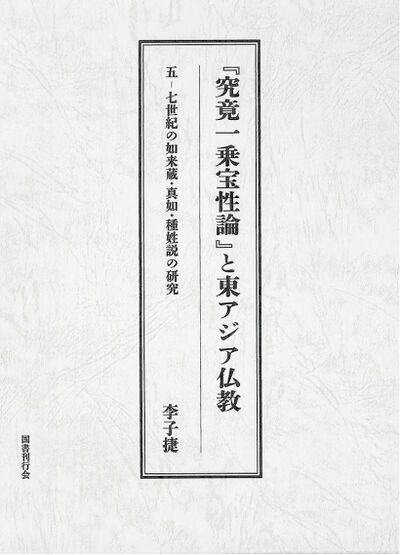My monograph explores theories on tathāgatagarbha, tathatā and gotra in East Asian Buddhism between the 5th and the 7th centuries, with a focus on the interpretation and influence of the Ratnagotravibhāga (Ch. Jiujing yisheng baoxing lun 究竟一乘寶性論). I review and reconsider tathāgatagarbha and consciousness-only theories in the context of East Asian Buddhism, especially before the return of Xuanzang 玄奘 (602-664) to China.
There are major differences between our Sanskrit text of the Ratnagotravibhāga and its classical Chinese translation, which had an immeasurable influence on East Asian Buddhist thought and has yet to be fully explored. No commentary on the Ratnagotravibhāga in Chinese Buddhism has survived, so scholars have maintained the opinion that it was not regarded too much in Chinese and East Asian Buddhism. However, the findings of my research show that the Chinese translation of the Ratnagotravibhāga had more influence than previously imagined in East Asian Buddhist intellectual history.
I explore the ideological background of the classical Chinese translation of the Ratnagotravibhāga, with reference to the Pusa dichi jing 菩薩地持經, several commentaries on the Śrīmālā-sūtra, the Da boniepan jing 大般涅槃經 and the Rulengqie jing 入楞伽經. In comparison to the surviving Sanskrit text, the Chinese version of the Ratnagotravibhāga downplays the significance of the expression gotra and instead reflects a strong interest in zhenru 真如 (Skt. tathatā) and foxing 佛性 (Buddha-nature) – for instance, 'zhenru foxing' becomes the foundation or reason for transmigration in the world. In this context, reality (Skt. tathatā) acts like a conditioned dharma, an idea that deeply influenced later understanding of Buddha-nature in East Asian Buddhism. I furthermore discuss the relationship between the Ratnagotravibhāga and other significant East Asian authors and teachings, such as Paramārtha 真諦 (499-569), the Dasheng qixin lun 大乘起信論, Fazang 法藏 (643-712), the Sanjie school 三階教, and trace the influence of the Ratnagotravibhāga beyond China into the writings of Wonhyo 元曉 (617-686) in Korea and the Japanese authors Juryō 寿霊 and Chikei 智憬 in Nara era (710-784). (Source Accessed May 25, 2021)
| Citation | Li, Zijie. Kukyō ichijō hōshōron to higashiajia bukkyō: Go—nana seiki no nyoraizō, shinnyo, shushō no kenkyū (The Ratnagotravibhāga and East Asian Buddhism: A Study on the Tathāgatagarbha, Tathatā and Gotra between the 5th and 7th Centuries). Tokyo: Kokusho Kankōkai, 2020. |
|---|---|
The wikipage input value is empty (e.g. <code>, [[]]</code>) and therefore it cannot be used as a name or as part of a query condition.

